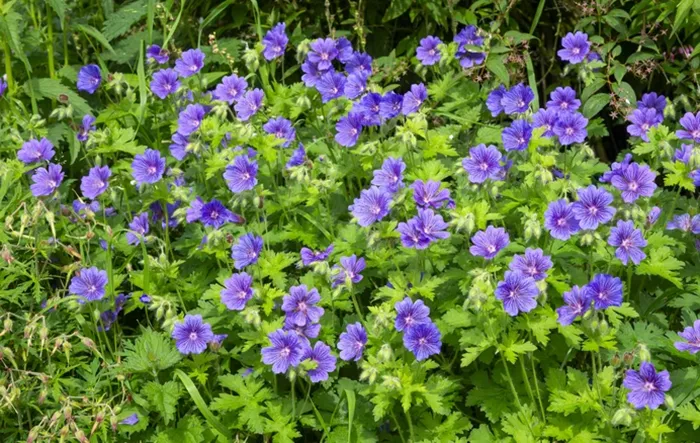Enhancing Your Spring Garden with Fall Bulbs and Ground Cover.
Planting bulbs such as tulips (Tulipa gesneriana L.) and daffodils (Narcissus pseudonarcissus) in the fall is an effective way to create a vibrant garden in spring. However, after these blooms fade, your garden may be left with unsightly yellowing leaves as they die back and gather nutrients for the next growth cycle. To improve the aesthetics of your garden during this period, consider interplanting with easy-to-grow ground cover. Several low-growing perennials can complement spring bulbs, ensuring your garden looks full and attractive while you wait for new blooms. Additionally, ground covers provide visual interest and help control weeds after the bulbs have finished flowering.
To gain insights on suitable interplanting options, we consulted Kate Gould, a garden designer and owner of Kate Gould Gardens, who has won a gold medal at the RHS Chelsea Flower Show. “Bulbs have really messy foliage,” Gould stated. “What you really want are plants that are going to grow up and cover the plants after they are done.”
Gould recommends hardy geraniums (Geranium bohemicum) as her top choice for interplanting with bulbs. She notes that there is a geranium variety for nearly every situation. These plants are easy to propagate and come in many options, such as ‘Kashmir Purple’ (Geranium clarkei), which thrives in shady areas. However, gardeners in or near Maryland should avoid shining geranium (Geranium lucidum) due to its invasive nature in that region. In addition, the perennial leadwort (Ceratostigma plumbaginoides) is an excellent low-growing option. In contrast, vigorous pachysandra (Pachysandra terminalis) can become overly dense and compete with flowering bulbs, making it a less suitable choice.
Benefits of Perennial Ground Cover
Using perennial ground cover plants is a great way to create a lush, filled-in look in your garden. Hardy geraniums and leadwort excel in ease of care and pest resistance. Both plants can withstand deer damage, adapt to partial shade and full sun, and self-sow, making them ideal for ground cover. However, while geraniums are resistant to rabbits, leadwort does not share this trait.
These resilient plants are also visually appealing. Leadwort produces striking blue-purple flowers that contrast with bright green foliage, which changes to bronze in the fall. This plant reaches a maximum height of 8 inches. Hardy geraniums offer a diverse selection, with around 700 different varieties available. These can range from bright pink and deep purple to soft orchid and white, with heights varying from 6 to 24 inches. When selecting geraniums for ground cover, it is crucial to choose a low-growing variety. Alternatively, you might consider replacing traditional grass lawns entirely with low-growing geraniums for a unique touch.
Related topics:
- Going Away? How to Keep Your Plants Healthy While You’re Gone
- Best Plants to Grow in October
- First Time Ever: Plants Shown Communicating with Each Other on Video


